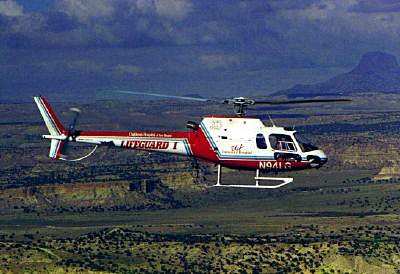Thu, Mar 19, 2009
Aims For Gains In Low-Altitude Infrastructure, Protecting
Patients, Advancing Air Ambulance Safety
Establishing a congressional air-medical caucus, achieving
greater federal funding levels to support the low-altitude
infrastructure, passing proposed air-medical safety legislation,
increasing air-ambulance Medicare reimbursement rates, and
addressing regional disparities in access to trauma services caused
by inadequate Medicaid reimbursement were some of the many issues
that air-medical services leaders focused on during the Association
of Air-Medical Services' Capitol Hill congressional briefings last
week.

The lobbying sessions were part of the annual spring conference
of the Association of Air Medical Services (AAMS), held March 11-13
in Washington, DC. The conference provided the opportunity for air
medical crew members to learn about the operational and legislative
issues that directly affect medical transport programs nationwide,
and to bring about improvements in the national legislative and
regulatory arenas.
"A chief goal of AAMS' spring conference and lobby day was to
educate policy and lawmakers regarding the need to direct more
federal funding towards improving the low-altitude infrastructure,"
said AAMS President Sandy Kinkade. "Currently, low-altitude
aviators do not have access to the same supportive components that
exist within the general-aviation infrastructure, which was built
specifically for scheduled, commercial airlines – an omission
that puts EMS helicopters in particular at a distinct
disadvantage."
Also important, Kinkade noted, is "securing federal funding for
remote weather stations that would help bridge a
‘weather-reporting gap.' Such funding would be directed
towards increasing the number of off-airport or small-airport
automated weather stations and adding weather-reporting technology
to hospital helipads."
 In addition to lobby day, other highlights of the three-day
conference included:
In addition to lobby day, other highlights of the three-day
conference included:
- A briefing from Robert Sumwalt, National Transportation Safety
Board (NTSB) board member and helicopter emergency medical services
(EMS) safety hearings board of inquiry chairperson,regarding the
outcome of and next steps following the February 3-6 NTSB hearing
in Washington, DC.
- A discussion with John McGraw, FAA, deputy director, slight
standards service, regarding the latest rules, policies and
activities of the FAA as they pertain to aviation in air medical
services and aviation safety, including recent developments in FAA
rulemaking and initiatives stemming from the NTSB's helicopter EMS
safety hearing.
- A Capitol Hill awards ceremony honoring Sen. Amy Klobuchar
(D-MN) and Drew Dawson, director, Office of Emergency Medical
services, National Highway Traffic Safety Administration, as the
2009 recipients of the AAMS Public Service Award. In addition,
Hector Murillo, RN, representing Children's Medical Center of
Dallas Transport Services, was presented with AAMS' Community
Service Award for its "Know Before You Go" water-safety
program.
- The announcement of a new family grant fund to benefit families
of crewmembers and patients killed or seriously injured in
air-medical accidents; the fund was established by the Foundation
for Air-Medical Research and Education (FARE), with lead grants
from donors totaling more than $25,000 to date.
More News
Light Gun A handheld directional light signaling device which emits a brilliant narrow beam of white, green, or red light as selected by the tower controller. The color and type of>[...]
"The journey to this achievement started nearly a decade ago when a freshly commissioned Gentry, driven by a fascination with new technologies and a desire to contribute significan>[...]
Aero Linx: JAARS, Inc. For decades now, we’ve landed planes on narrow rivers and towering mountains. We’ve outfitted boats and vehicles to reach villages that rarely se>[...]
"Our driven and innovative team of military and civilian Airmen delivers combat power daily, ensuring our nation is ready today and tomorrow." Source: General Duke Richardson, AFMC>[...]
Aircraft Conflict Predicted conflict, within EDST of two aircraft, or between aircraft and airspace. A Red alert is used for conflicts when the predicted minimum separation is 5 na>[...]
 ANN's Daily Aero-Term (04.20.24): Light Gun
ANN's Daily Aero-Term (04.20.24): Light Gun Aero-News: Quote of the Day (04.20.24)
Aero-News: Quote of the Day (04.20.24) ANN's Daily Aero-Linx (04.21.24)
ANN's Daily Aero-Linx (04.21.24) Aero-News: Quote of the Day (04.21.24)
Aero-News: Quote of the Day (04.21.24) ANN's Daily Aero-Term (04.21.24): Aircraft Conflict
ANN's Daily Aero-Term (04.21.24): Aircraft Conflict




